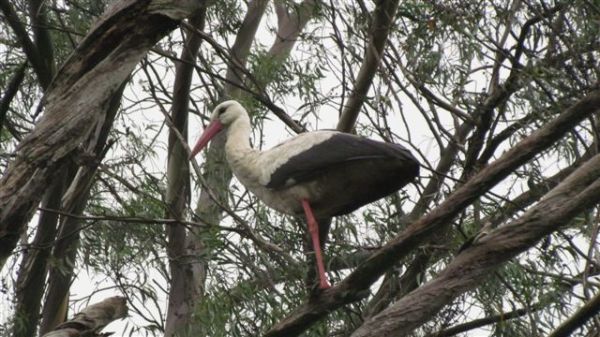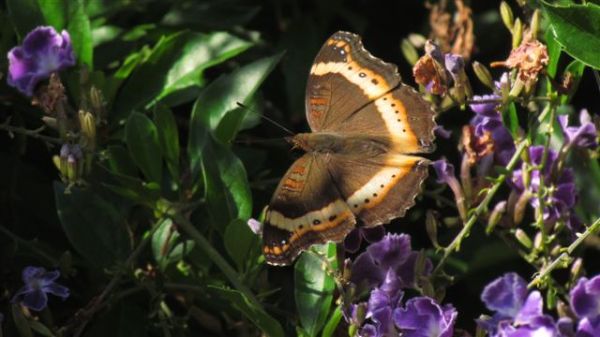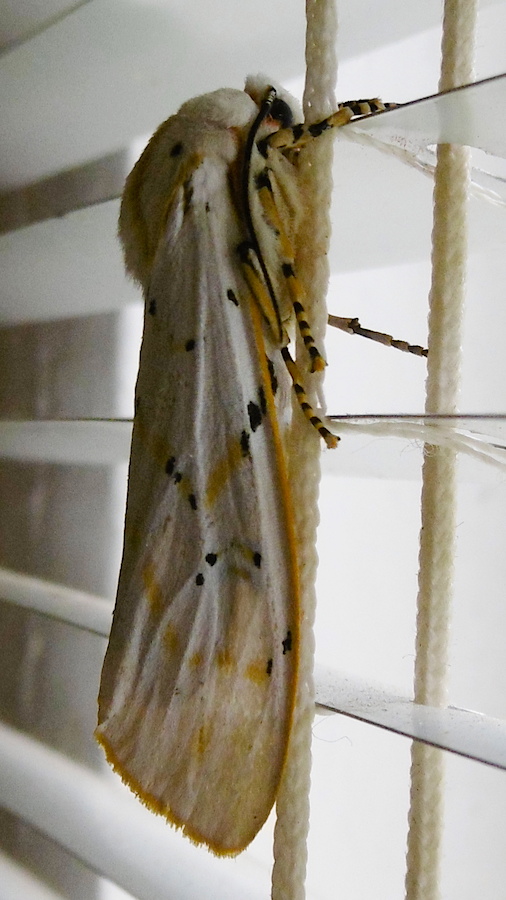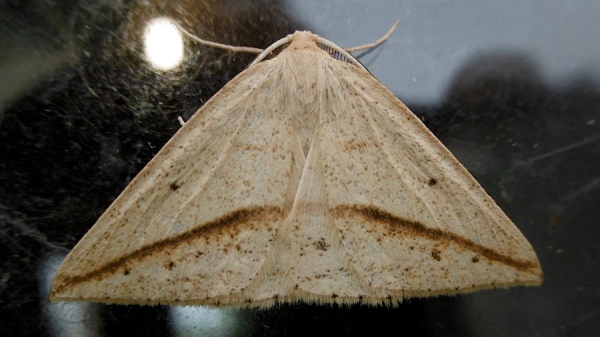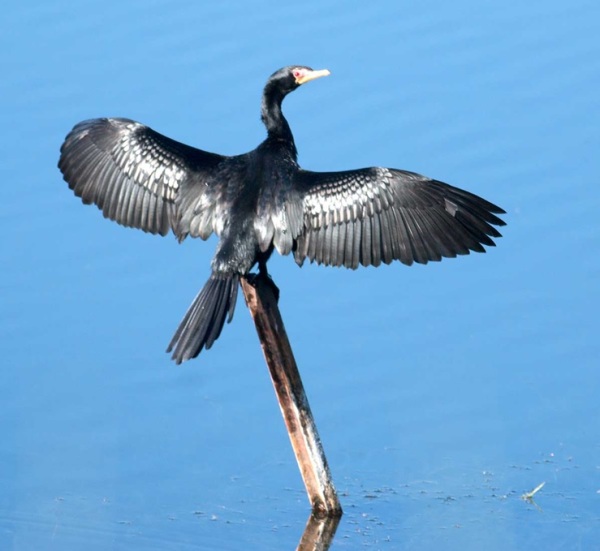Oak Tree Cottage – Barry Downard

Saw this chameleon making his way across the lawn… unusually dark colours, but looks like he’s just shed his skin.
Jenny Fly
The first photo is of Collared Earth Stars growing in the leaf mould of a yellowwood
and the other two of unknown fungi.
Albury Farm – Pat and Sandra Merrick
While I was deheading flowers 3 weeks ago nearly stood on a puff adder. It did disappear into shrubbery thank goodness but have not done much gardening since. At least we had good rain afterwards. We have had 150mm rain for the month.
The Juvenile Blue Crane is doing well and now 3 months old. Still not flying.
Dozens of chats are back. Swallows and sparrows nesting once more. The barn owls are still in chimney. Hundreds of toadstools after the rains especially around the oak trees. Pat saw spotted eagle owl on D18 and then again one evening.
He also saw a baby reedbuck under a bug tree one morning while spraying. It ran off. Five Grey Crowned Crane have visited the dam. They nest on our neighbour’s farm and rear 2 to 3 juveniles each year. They have been there for the 30 years that we have lived on the farm. The problem about rearing the young is that there are a couple of water monitors in the dam which seem to eat the young.
Little grebe, egyptian geese and yellow bill duck have all reared youngsters. Black sunbird (male in flight) female built another nest on glass shade on verandah and she is now sitting. Male pops in and out feeding her.
The Jackals are still seen during the day. Two Reedbuck carcasses found at the dam. Not sure if they died of natural causes or were attacked and eaten. Still see many reed buck and duiker. Heard ground woodpecker.
Ten days ago we saw that the aardvark had dug an enormous hole in the side of the hill opposite our house. We called Amy Wilson, who does research on these animals, and she came and set up 3 camera traps. She will be collecting them next week, so hopefully we may be able to show you some footage next month.
We have had a number of crabs running around. 2 on our verandah and…
… a Steppe Buzzard eating one in our driveway. He took about 5 minutes to devour it but only ate the innards as the shell was left. The Steppe and Jackal Buzzard visit us every few days. They are eating frogs and crabs in our small pools.
One night the dogs were barking for hours. Pat eventually went out to have a look and found that they had cornered a giant grey mongoose in the stream. A fight ensued and they killed it but not before giving my rottie a severe bite on his face. Fortunately they have had their rabies vaccinations.
Many butterflies in the garden. Took hours of patience to photograph them as they flit around so quickly.

Unidentified Butterfly – flits around very quickly, pale yellow with strange markings on wings with little circles here and there…
My most exciting news is that a month after the cape robins vanished from their nest (last months newsletter) I saw them in the garden one morning sitting on the water spray. They had caught an earthworm and mom was close by watching the antics. They do not look like robins yet. They are brown/grey with mottled chests and reddish tails. I have taken many pics of them swimming in the rock pool each morning.
There is also another cape robin still feeding her youngster. I never realised that birds continue to feed and nurture their young for a number of weeks after leaving the nest.
There is also a juvenile (I think) Southern Boubou making use of the rock pool.
Some wildflowers seen this month:

Not sure what these orange fungus things are that grow on broken down trees are called – found in forest
Hopedale Farm – Mike & Ann Weeden
Mike and Ann rented the Dargle Conservancy trophy camera from November 2014 up until January this year and thought that they hadn’t captured anything. I managed to locate 1 video of a Reedbuck doe which is available on the “Dargle” Facebook page. I made a screen capture so you can see an image of it.
Copperleigh Farm – Ashley Crookes
Not a good month for the poor snakes, found a few dead ones.
We also had a nice thunderstorm this afternoon (Saturday). Unfortunately we all got caught on top of the hill and were soaked through by the time we got home, but there was a brilliant rainbow afterwards.

Brilliant rainbow after storm
I’ve also been using the DC Trophy camera for a couple of weeks now and managed to capture some of the Yellow-billed ducks and Spurwing geese we have around our little island on Mavela Dam.
Will get videos onto the Dargle Facebook page soon. We also had a Barn Owl flying through our shed this past week while we were working with the sheep which was quite exciting.
Natal Green Snake on the paving.

Close up…
…and then climbing up into the roof!
Other sightings:












